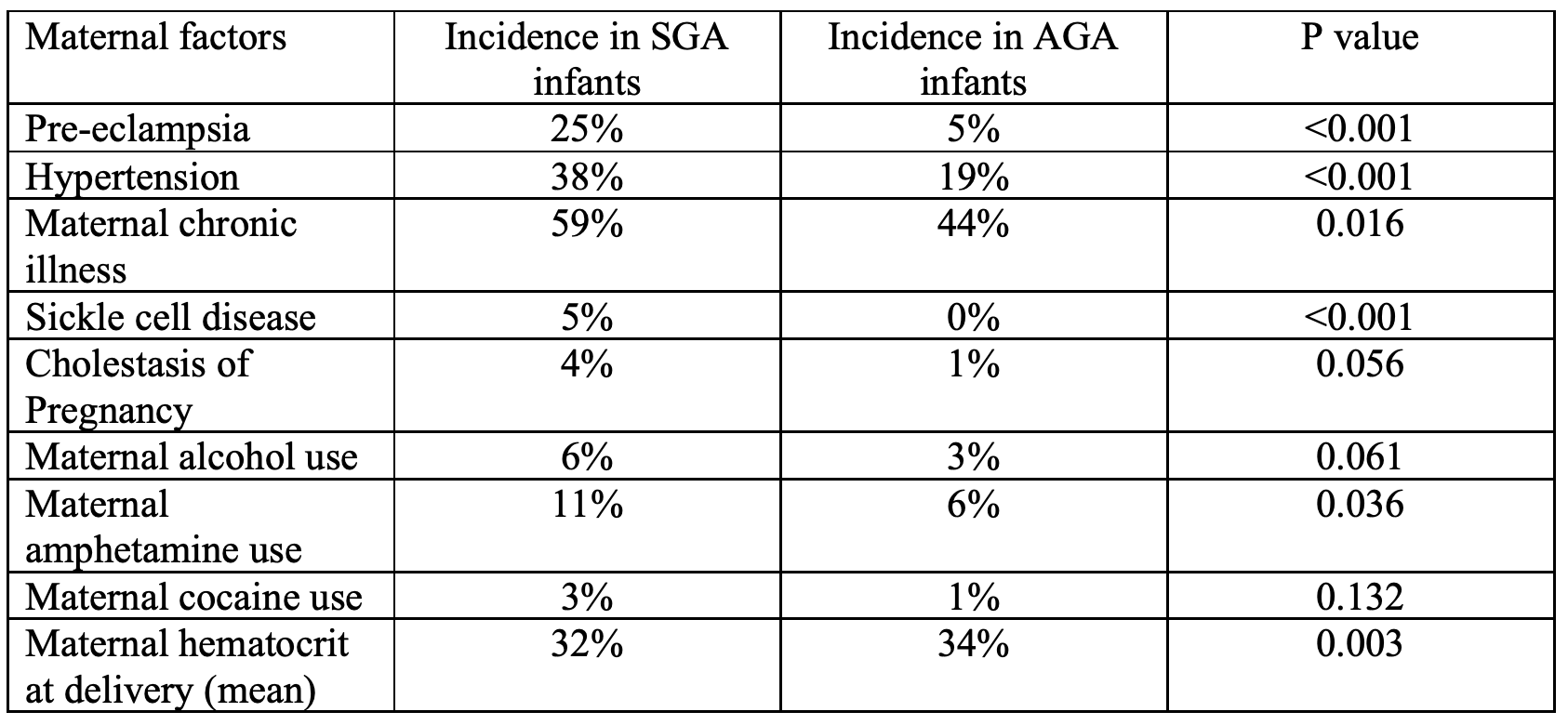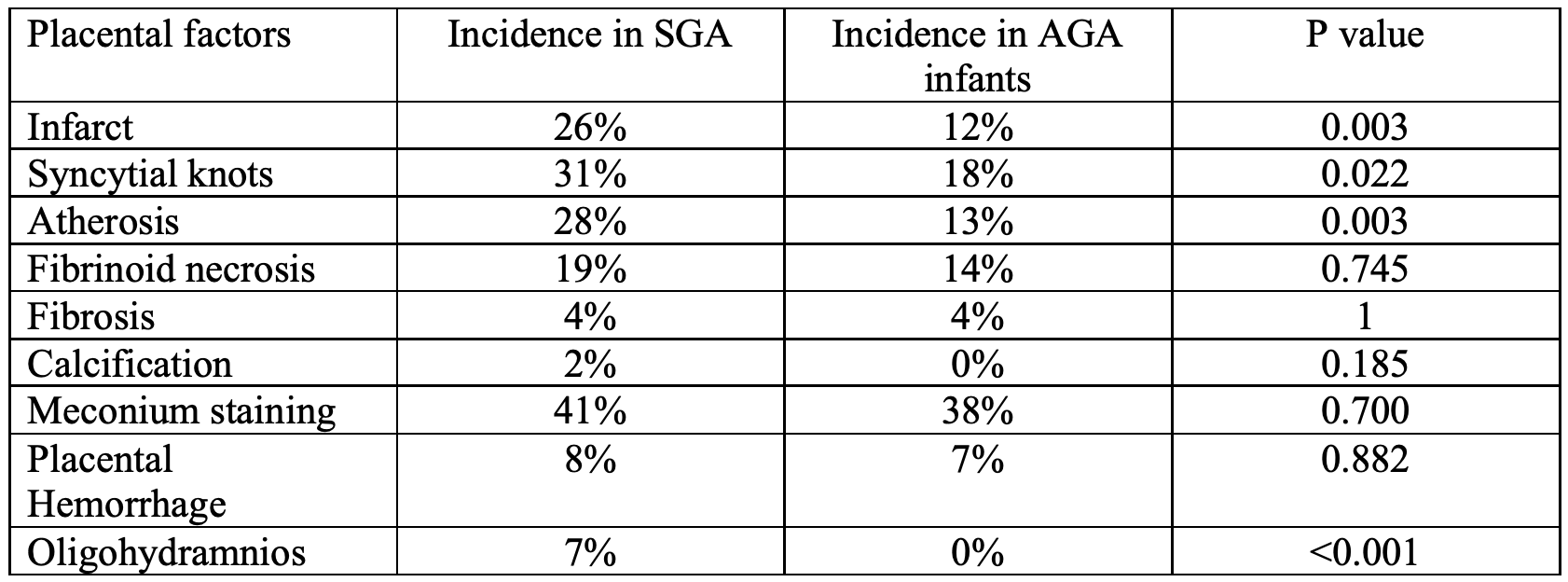Neonatal General
Category: Abstract Submission
Neonatology General 4
386 - Characterization and Outcomes of Small for Gestational Age Very Low Birth Weight Infants
Friday, April 22, 2022
6:15 PM - 8:45 PM US MT
Poster Number: 386
Publication Number: 386.134
Publication Number: 386.134
Kate E. Ramm, LAC+USC Medical Center, Newport Beach, CA, United States; Alexis Hisey, LAC + USC Medical Center, Los Angeles, CA, United States; Nagapranati S. Nanduri, LAC+USC Medical Center Neonatology, Philadelphia, PA, United States; Yijun Shao, LAC+USC Medical Center, San Francisco, CA, United States; Christiana Marquez, LAC USC Medical Center, Yorba Linda, CA, United States; Rangasamy Ramanathan, Keck School of Medicine of USC, Los Angeles, CA, United States; Manoj Biniwale, USC Keck School of Medicine, Los Angeles, CA, United States
.jpg)
Kate E. Ramm (she/her/hers)
Research Assistant
LAC+USC Medical Center
Newport Beach, California, United States
Presenting Author(s)
Background: Small for gestational age (SGA) infants constitute significant problems in neonatal intensive care units especially when they are born at very low birth weight (VLBW). Frequently, the cause of SGA is not known.
Objective: This study aims to identify the role of maternal factors and placental abnormalities in SGA infants on short term neonatal outcomes in VLBW infants.
Design/Methods: The data on VLBW infants from LAC+USC medical center between the years of 2009 to 2021 was retrospectively collected from electronic medical records after receiving IRB approval. Maternal factors included placental abnormalities and maternal illnesses, such as sickle cell disease, hypertension, diabetes mellitus, hepatitis, cardiomyopathy, asthma, lupus erythematosus, obesity, and cancer. Placental factors were identified from histopathology report on all placenta. Short term neonatal outcomes were tested for significance using SPSS software version 28.
Results: Of 643 VLBW infants, 25% were born SGA at birth weight less than 10%. The most common cause for these infants to be delivered prematurely was maternal hypertension (38%). Infants born to mothers with chronic illness were found to be SGA (59% vs 44% p=0.016). Amphetamine use by mothers increased risk for delivering SGA-VLBW infants (p=0.036). Most common placental abnormalities associated with delivering SGA-VLBW infant were placental infarct, syncytial knot, and atherosis, whereas other factors including meconium staining, calcification, or fibrosis were not associated with SGA-VLBW infants. SGA-VLBW infants were also likely to have a smaller head circumference (6% vs 26%; p= 0.004). The common NICU problems at admission upon delivery of SGA-VLBW infants were hypoglycemia (p=0.012), hypothermia (p=0.047), and acidosis on initial blood gas (p= 0.045). There was no statistically significant impact on necrotizing enterocolitis, and long-term morbidities, including bronchopulmonary dysplasia, or abnormal MRI related to SGA-VLBW infants.Conclusion(s): While the most common causes of SGA infants were maternal pre-eclampsia and chronic illness, several placental problems were found to also be related to SGA-VLBW infants. Additionally, a significant number of preterm SGA infants are born with smaller head circumference secondary to maternal or placental problems. Long term morbidities are similar in SGA-VLBW infants compared to appropriate for gestational age VLBW infants even when they were born at higher gestational age.
Maternal factors associated with SGA infants
Placental factors associated with SGA infants
Objective: This study aims to identify the role of maternal factors and placental abnormalities in SGA infants on short term neonatal outcomes in VLBW infants.
Design/Methods: The data on VLBW infants from LAC+USC medical center between the years of 2009 to 2021 was retrospectively collected from electronic medical records after receiving IRB approval. Maternal factors included placental abnormalities and maternal illnesses, such as sickle cell disease, hypertension, diabetes mellitus, hepatitis, cardiomyopathy, asthma, lupus erythematosus, obesity, and cancer. Placental factors were identified from histopathology report on all placenta. Short term neonatal outcomes were tested for significance using SPSS software version 28.
Results: Of 643 VLBW infants, 25% were born SGA at birth weight less than 10%. The most common cause for these infants to be delivered prematurely was maternal hypertension (38%). Infants born to mothers with chronic illness were found to be SGA (59% vs 44% p=0.016). Amphetamine use by mothers increased risk for delivering SGA-VLBW infants (p=0.036). Most common placental abnormalities associated with delivering SGA-VLBW infant were placental infarct, syncytial knot, and atherosis, whereas other factors including meconium staining, calcification, or fibrosis were not associated with SGA-VLBW infants. SGA-VLBW infants were also likely to have a smaller head circumference (6% vs 26%; p= 0.004). The common NICU problems at admission upon delivery of SGA-VLBW infants were hypoglycemia (p=0.012), hypothermia (p=0.047), and acidosis on initial blood gas (p= 0.045). There was no statistically significant impact on necrotizing enterocolitis, and long-term morbidities, including bronchopulmonary dysplasia, or abnormal MRI related to SGA-VLBW infants.Conclusion(s): While the most common causes of SGA infants were maternal pre-eclampsia and chronic illness, several placental problems were found to also be related to SGA-VLBW infants. Additionally, a significant number of preterm SGA infants are born with smaller head circumference secondary to maternal or placental problems. Long term morbidities are similar in SGA-VLBW infants compared to appropriate for gestational age VLBW infants even when they were born at higher gestational age.
Maternal factors associated with SGA infants

Placental factors associated with SGA infants

